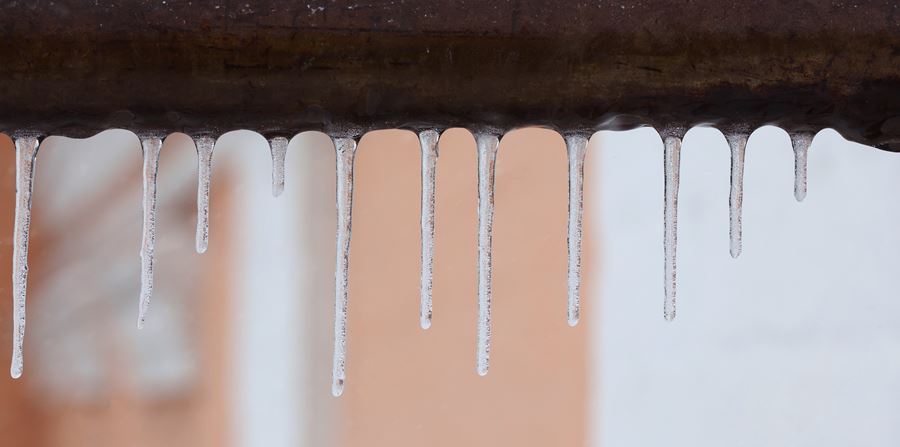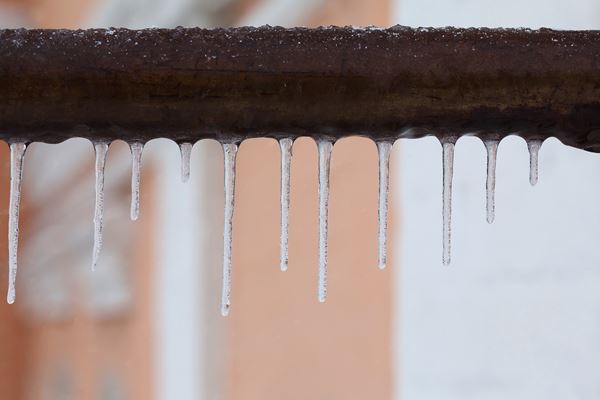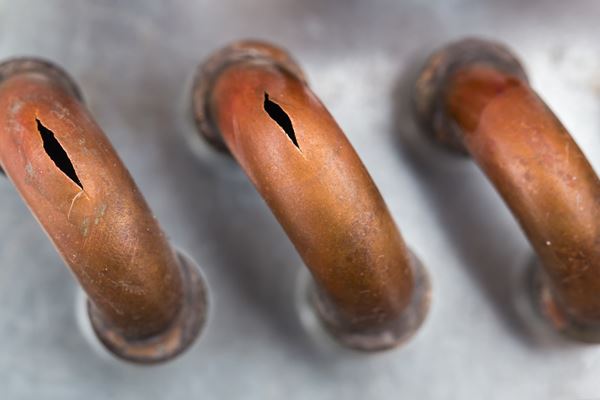Winter Property Claims: Tips to Prevent Frozen Pipe Bursts, Ice Dams and Roof Collapses

In many parts of the world, it's the frozen tundra days of winter, and if you aren't in that part of the world, lucky you! It's during these months where you'll find claim after claim surrounding weather-related incidents. From pipe bursts to ice dams, to commercial and residential roof collapses, winter can be a pretty rough time for home and business owners alike. Read on for some tips on how to prevent the worst from happening!
Be Aware of Uneven Snow Accumulation That Might Cause Ice Dams
Some commercial buildings have flat roofs, and that's ok, but be mindful of how much weight it can take. If you have solar panels, skylights, rooftop vents, heating and cooling, or other items present on your roof, remember that snowdrifts can accumulate unevenly and oftentimes at these elements. Know your risks ahead of time to prevent structural failure or roof collapse by enlisting the help of a building professional or structural engineer to mitigate any issues early.
Please do not take this as an effort to get up on your roof, in an unsafe manner and try to mitigate the snow yourself! Be mindful of your surroundings and what may cause more harm than good.
Warning Signs for Ice Dams
Roofs don't typically just collapse out of nowhere. Know what to look for before it happens.
- If you see any areas of the ceiling start to sag, investigate it.
- Cracking. If you see cracks on the exterior of the building, as well as the ceiling or interior walls, it could be a sign of roof failure.
- This is a clear sign that you need to inspect your roof and find the cause, including figuring out if any structural damage is to blame.
- Misaligned sprinkler heads. Any time a sprinkler is out of alignment, structural shifts in the ceiling should be examined.
- Doors and windows that are difficult to open and close. This could be due to structural shifting and needs to be analyzed.
- Bowing truss bottom chords or web members. This could all be a sign of distress.
- Drain blockage. Gutters, vents, drains, and downspouts all need to be checked for ice accumulation from recent weather incidents to make sure there is no blockage. Any additional accumulation may be pushed to the roof causing additional weight and stress.
How Did This Happen?
An all too often question after a pipe bursts is, "How did this happen?" During colder winter months, the water that comes into the home or property is obviously much colder than it is in warmer months, and it causes the pipes to contract. If you have weak areas in your piping, those weaker areas can spring leaks. This is especially true for pipes near the outer walls or windows of a structure. So it's important to be mindful of your plumbing.
Want a few tips? Make sure to seal any and all cold air pockets that may be coming in from the outside. Use caulk or installation to fill any tiny holes which could lead to dropped temperatures near a pipe. At the same time, if possible, make sure to keep temperatures in the residence above freezing. And, try to open cabinets where pipes are present to let warm air in. Lastly, be sure to disconnect your hose from the outside of your property. If you have a septic system, insulate the top of the septic tank in the fall by piling leaves on top of the tank, or better yet, place foam insulation boards on the ground and then cover with leaves.
Ice, Ice, and More Ice: The Art of Ice Damming
So what exactly is an ice dam and why is it bad for your property? An ice dam is simply a ridge of ice that forms along the edge of a roof and prevents snow from melting and draining. The water that backs up behind the ice dam can leak inside the property and cause damage.
Attic insulation and ventilation are critical factors in the cause of ice dams. Inadequate insulation allows the heat in a home to escape through ceilings. This heat melts snow on the roof, and the meltwater freezes at the cold eaves. However, if properly vented, the heat can escape and less melting occurs. As such, it is important to never cover vents. These vents can be turbine vents, ridge vents, static vents in the roof field, soffit vents, and vents in the gable walls.
Both ice dams and melting snow can cause icicles to form from roofs or overhangs. As a rule, be careful when removing snow, but be especially cautious when icicles are present as they can damage property below or injure someone. Ice will also accumulate in gutters and downspouts leading to further damage.
As previously mentioned, if the roof's drainage systems are blocked, that's a clear warning sign. Ponding can form, which creates a concentrated load on the roof's structural system and poses a potential hazard.
If You're Suspicious, Get Your Roof Checked Out
As always, if you find that any of what we've said above could be happening on your property, consider sending in a building expert to assess potential hazards early, to avoid collapses or other incidents. And if you're too late, and a hazard has already occurred, contact a structural engineer immediately to mitigate any issues as soon as possible.
Vores eksperter kan hjælpe dig!


